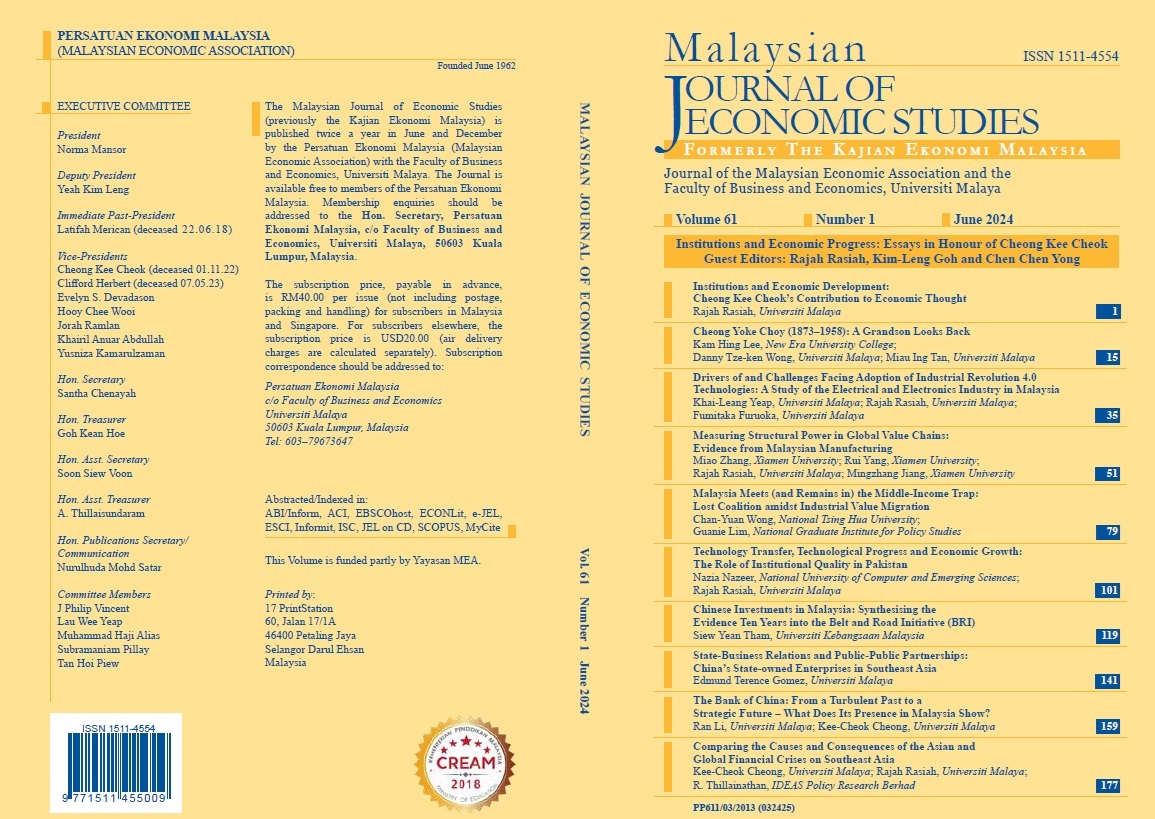Measuring Structural Power in Global Value Chains: Evidence from Malaysian Manufacturing
DOI:
https://doi.org/10.22452/MJES.vol61no1.4Keywords:
Global value chain, trade in value added, structural power, MalaysiaAbstract
The global value chain (GVC), as the most important feature and driving force of globalisation has profoundly shaped state–market relations, as well as the international political economy. This paper uses Malaysia as a case study to demonstrate a country’s embedding structural power in GVC. Deploying the OECD’s Inter-Country Input-Output Table from 1995 to 2018, two indicators were constructed, namely power of value added (PV) and interaction of value added (IV), to measure Malaysia’s structural power in GVC. The results indicate that Malaysia’s PV in GVCs has declined over the years. A combination of high GVC participation but low GVC position indicates that Malaysia’s export sector remains stuck in low value-added activities despite being highly integrated into global production networks. Also examined is the value-added interaction between Malaysia and major economic powers, such as the US, China and Japan. In so doing, we provide an evolutionary explanation of Malaysia’s location in the international political economic system where economic and political power are increasingly intertwined.

